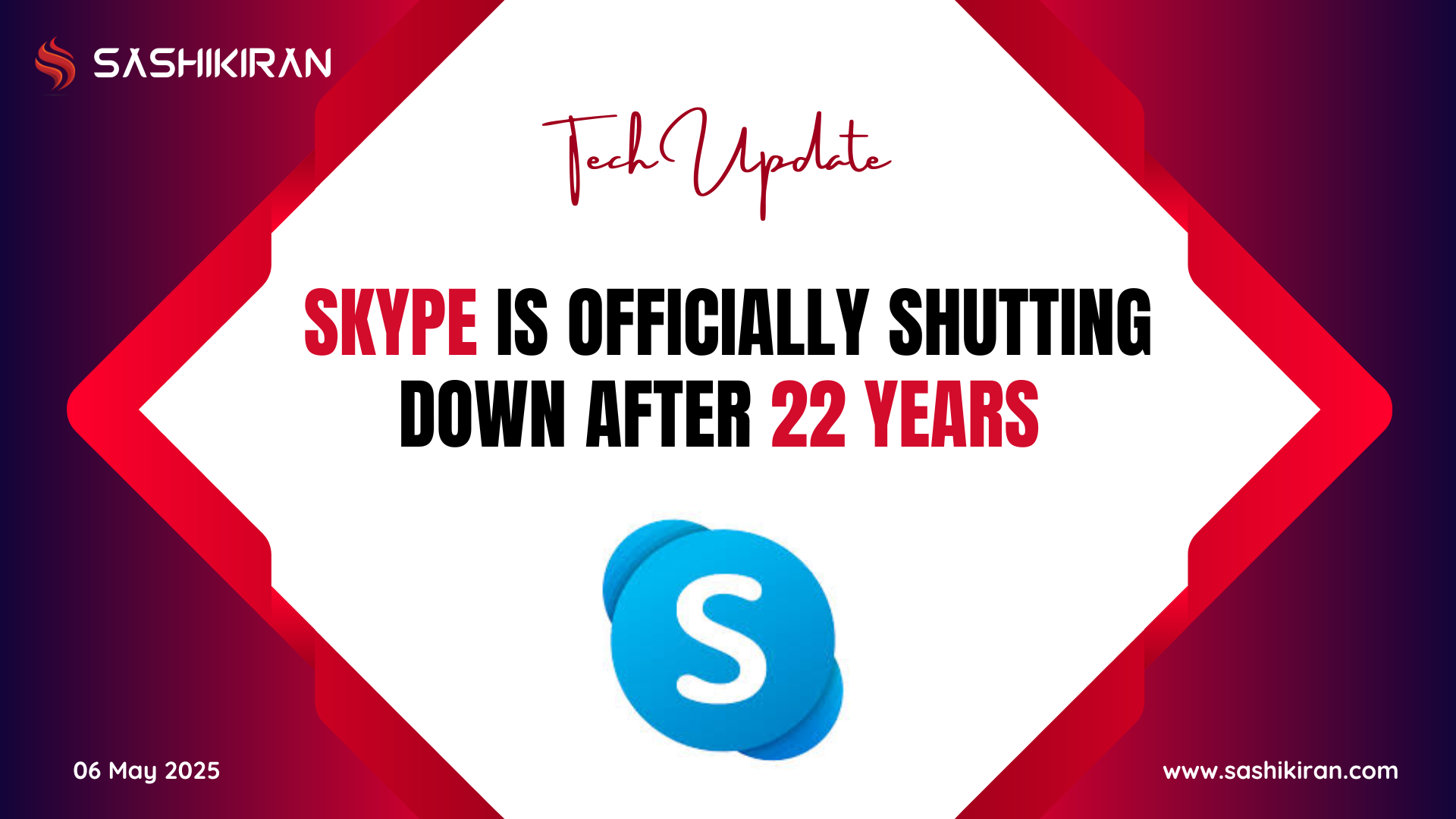Skype Is Officially Shutting Down After 22 Years : What It Really Means ?
I still remember the first time I used Skype. It was 2007. I was in college, trying to connect with a cousin who had just moved to the U.S. That little blue “S” icon meant a world of possibilities — free voice calls, video chats, and a whole new way to stay connected. It was revolutionary. But now, after 22 years, Microsoft has officially announced that Skype will be phased out, making way for Microsoft Teams as the core communication platform.
As a UX designer, I find this moment more than just nostalgic — it’s a case study in business strategy, product evolution, and what happens when a once-innovative product doesn’t keep up with changing user expectations.
Why Is Skype Shutting Down?
Skype isn’t being deleted tomorrow. In fact, Microsoft will maintain data access until 2026, and users can export their data until then. But make no mistake — the company has been gradually shifting focus away from Skype for years. Now, with this formal announcement, the message is clear: Microsoft Teams is the future.
From a business standpoint, this was a strategic move. Here’s why:
- User Behavior Has Shifted
Post-2020, the demand isn’t just for video calling — it’s for integrated collaboration. People want chat, video, file sharing, and productivity tools in one place. Skype was primarily a communication tool, while Teams is a collaboration ecosystem. - Product Fragmentation Hurt Skype
At one point, there were multiple versions of Skype — for Windows, for Web, for Business, for mobile — all behaving inconsistently. That fragmented experience caused friction. Meanwhile, apps like Zoom and Google Meet offered cleaner, unified experiences. - Microsoft Acquired, But Didn’t Reimagine
When Microsoft acquired Skype in 2011 for $8.5 billion, expectations were high. But instead of evolving it into a robust product with new UX standards, Skype stagnated. By the time Teams came along, Skype had already lost mindshare. - UX Didn’t Evolve Fast Enough
Skype’s user experience began to feel outdated. Clunky navigation, unreliable call quality, inconsistent design patterns — it just didn’t meet modern expectations. Competitors moved faster, more agile in iterating on user feedback and interface simplicity.
A Lesson in UX and Product Strategy
As someone who’s been part of UX design for a decade, here’s the real takeaway: no amount of legacy or brand loyalty can compensate for a lack of user-centric evolution. Skype’s downfall wasn’t just about competition — it was about losing touch with what users needed next.
Microsoft didn’t kill Skype. The market did. And Microsoft simply responded by doubling down on a product (Teams) that better fit the times.
The most successful products are the ones that are designed to adapt. And that’s where strategic UX frameworks like the 7S Design Framework shine. They help product teams continuously Study, Strategize, Solve, and Scan user behavior — so no brand gets left behind.
What Happens Next?
Skype will still be functional for some time, and your data is safe until at least 2026. But now’s a good time to back up conversations, media, and contacts if you’ve been a long-time user.
For those of us who grew up with the dial tone of a Skype call, this may feel like the end of an era. But in the tech world, every ending is just a pivot to something new — and hopefully, better designed.

